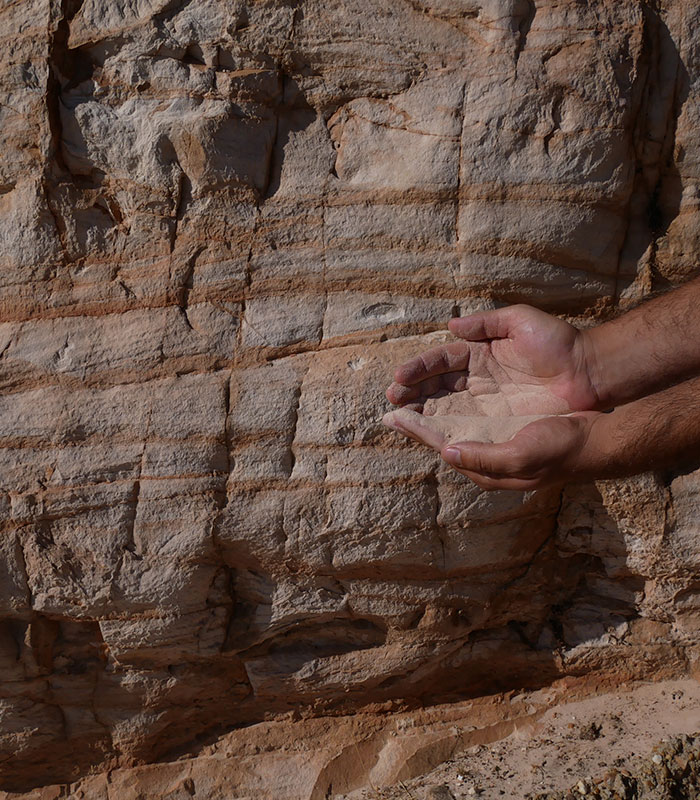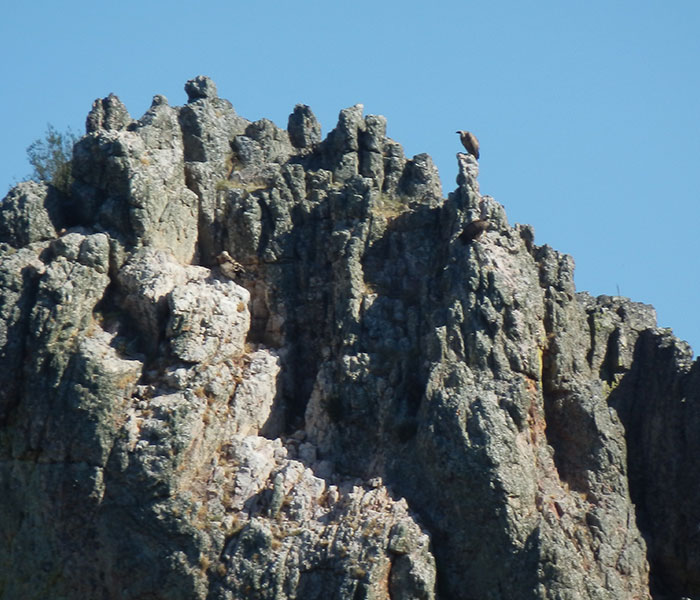The Armorican Quartzite hills highlight on the crests of Las Villuercas with their impressive quasi-vertical walls. Armorican quartzite is the old geological denomination to the Ordovician sandstones (orthoquartzite) that are abundant on the west of the Iberian Peninsula. They are undoubtedly the most visible rocks and, also, the most resistant to the erosion. Therefore, they are the testimony of the Ordovician period, near 200 million years older than the Hercynian orogeny that fold them. As they were materials that had been settled on the seabed 480 million years ago they have retained the traces of the trilobites that were plying the sand leaving clues we now call “Cruziana“. These sands became siliceous sandstone which, being pressured by new materials that were deposited on them, performed the dense and compact hard rock known today as Armorican quartzite. During this transformation the fossil traces of the trilobites have not changed and, today, we can see them printed in the rocks almost everywhere. But they are not the trilobites the only fossils found in the geopark, nor the oldest.
Villuercas – Ibores – Jara is also scientifically important for other paleontological deposits whose observation on site is complicated, so it is better to understand them in the interpretation centers.


This geopark is the witness of one of the major events in the evolution of life: the origin and radiation of the first animals. Some levels of the calcareous strata deposited in the Anticlinal of Ibor contain fossils of the genus Cloudina that it is characteristic of the Ediacaran Period (635-542 ma). Cloudina carinata was described here. It was the first animal that generated a mineralized exoskeleton. It is considered as a precursor of the widespread biomineralization occurred in the early Paleozoic animals that let them to colonize new environments in which to feed. Certainly that led to a strong expansion of marine fauna that has been collected in the fossil record as a major event of evolution known as “the biotic Cambrian Explosion”.
The Geopark fossil deposits talk about that event and about the next: the “Great Ordovician radiation” that is represented here by an exceptional abundance of trilobites, brachiopods, bryozoans, echinoderms, mollusks (bivalves and cephalopods) and graptoliths. To know them, it is better going to the Geopark Visitor Centre in Cañamero. Please remember that visiting Las Villuercas is a commitment to the heritage conservation and in no way fossils can be collected in the field.